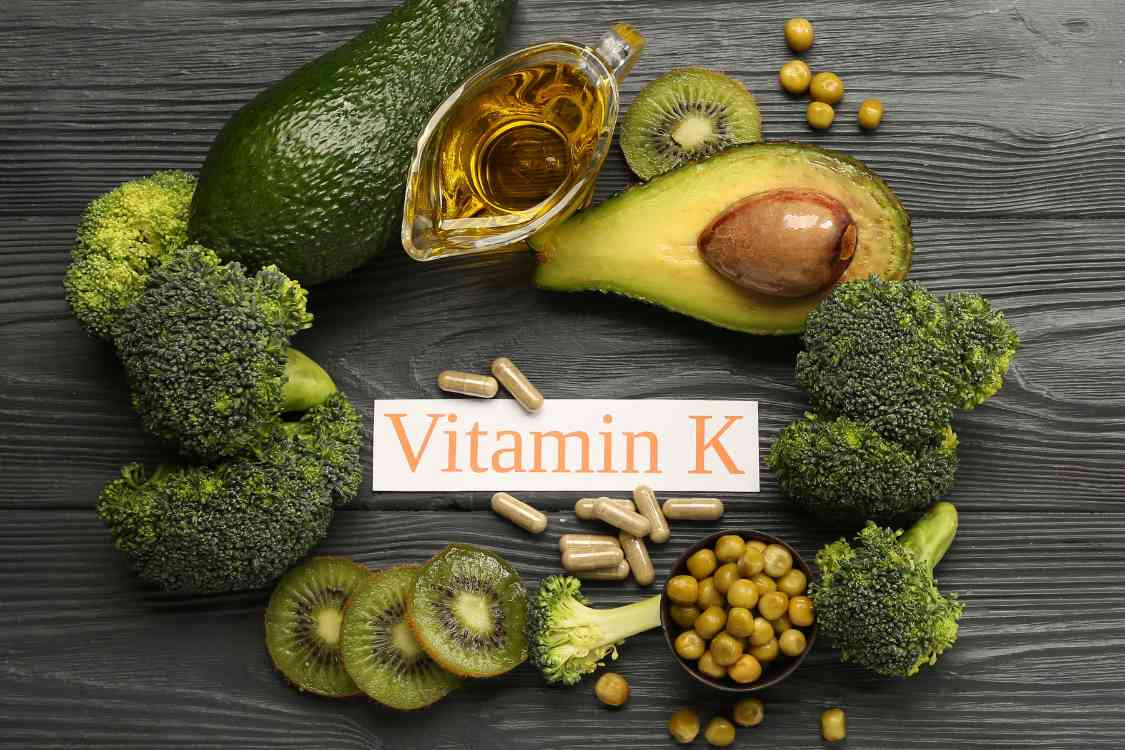Vitamin K2: Remineralises Your Teeth & Can Reverse Cavities

We know about calcium for oral health but what the K is Vitamin K2?
Okay, what is vitamin K? And why, exactly, are there two of them?
It’s a story that began in 1930s Canada – the decade known as the Dirty Thirties.
Extreme drought cracked its southern prairies in 1934; right on the dragging heels of the dry seasons of ’31 and ’33. The country was one of the most greatly affected by the Great Depression because of its reliance on raw materials and agricultural export. Although it was certainly an economic shock across the world, its propagating social disturbance moved faster than the speed of human adjustment.
Its abrupt spike deflating Canada like a cheap balloon at an echidna party.
It was dramatic. Between 1929 and 1933, the country’s Gross National Expenditure fell by 42%. By 1933, 30% of its labour force was out of work. One-in-five was dependent on welfare, and the unemployment rate stayed above 12% until 1939 when the Second World War fixed the issue of young, healthy men thinking their lives were ahead of them.
Years of drought, grasshopper plagues and unprecedented hailstorms caused huge crop failures. To this day, Saskatchewan holds the lowest price for wheat in recorded history. Within just two measly years, the province’s income plummeted by 90% with only 34% of the rural population not exclusively reliant on government relief.
By 1932, the western provinces of Canada were technically bankrupt.
With more intensity than most other countries, the burden of the Depression unequally disseminated its brazen self between the classes. Wages dropped, and costs declined even faster. Much like now, the standard of living for property owners and the stable-employed improved; while exponentially, farmers, small business, young people and the workless bore the brunt of this economic hardship.
The silver lining of this cloud that descended and stayed and stayed in vapour form without one droplet hitting ground, was the social welfare system that resulted, the populist political movements it produced, and the answer to the demand for a more active and dynamic government role in the country’s economics.
And from those sun-ravaged prairies, came understanding the relationship between the architecture and depth of root systems, and the ability of a species to withstand drought conditions.
(We’ll remember those kind of positives if it all goes down again soon.)
If 1930s Canada was Dudley Do-Right Dudley Do-Right Of The Mounties, Snidely Whiplash was the era. Nell Fenwick was the hope-filled intention, her dad Inspector Fenwick the changing paradigm of the times. Dudley’s everlovin’ horse companion Horse is the elephant in room: the accepted – but never right – insidious narcissism that masterfully and malevolently manipulates the world.
… okay maybe not. It’s just that Dudley’s in love with Nell and she’s in love with Horse, and is always, always her happiest when her hero is on his way after having been kidnapped by Snidely for the umpteenth time. (Who’d have thought it… be ALERT girl!)
Dudley of course thinks he’s her hero when in fact it’s Horse – Dudley’s equine best mate, and the one Nell spends most time with.
Just right there is a whole load to unpack when attributing meaning to 1960s cartoons simply because why not. There’s a singular ranga damsel in (wash, rinse, repeat) distress, a Red Serge-wearing horse the size of a horse with no pants constantly being ridden backwards, feigned helplessness, rescuing … just pass me Women who Run with the Wolves.
Good ol’ sultry-eyed chandelle Nell even goes so far as to wed poor wronged Dud ‘Right, only to be Snidely ‘napped before the doing of the ‘I do’s’.
Nobody knows how that reception went. Who was found in a closet with whom, anyone who came out of one and whether Horse horsing around with horse was a just rumour from down the track.
Before Canada was Dudley and Newton’s first law of the Depression was Whiplash, a dentist by the name of Weston A. Price became involved in one of the hottest topics of the time among the dental profession: discovering why the population’s oral health was declining so rapidly.
This notable deterioration in the oral health of his patients guided his growing suspicion that it was diet related, which set him on an extensive, and very revolutionary, world adventure. Weston Price observed the food style, preparation and intake from Alaskan Innuits, Swiss mountain farmers, First Nations People of Australia, Indian, African and Amazonian tribesmen, and Pacific Northwest Native Americans. Each member of these thriving, primitive cultures had very, very healthy teeth and gums. Price studied their diets and began learning their nutritional wisdom.
What he found throughout the incredible variety of foods consumed, every diet had the same trait: no processed foods, no refined starches and no sugar other than that already organically supplied. Each culture ate only what they could grow, gather or catch themselves.
It was dentist Weston Andrew Valleau Price who established that these strong bones and teeth were result of diets rich in vitamin A and vitamin D: the main building blocks.
His candid discovery was in the mysterious ‘new vitamin-like activator’ that he named ‘Activator X’. Which is so very Fox Movietone’s Just Imagine. Imagine playing golf and struck by lightning in 1930 to wake up in New York City, 1980.
Although there are no Devo or Blondie releases, it’s a bewildering world of technological astonishment. Vehicles are in the air, food comes in pills, people are known by letters and numbers and babies come from vending machines.
(I know. Gave me shivers too. But wait, there’s more!)
J21 proposes to LN18 but is rejected by the authorities as being unsuitable. So J21 decides to pilot the first manned expedition to Mars to prove himself worthy of her love. No spoilers here … could it be Elon Musk’s love story?

Anyway, the marvellous Weston A. Price, died in 1948, aged 78 never knowing that his mysterious Activator X was in fact vitamin K2. His legacy is the knowledge of the relationship between nutrition, dental health, and physical health that we continue to question and research. He changed the dental profession with his 1939 book, The Weston A. Price Diet: Traditional Wisdom for Modern Life. Familiarise yourself with it. It’s more than worth countless cat videos and cockatoos bossing dogs.
Not that there’s anything wrong with that.
Vitamin K2 means little without Vitamin K (aka K1), which is of course found in green leafy vegetables (depending on your year of birth, you might have to look those up), kiwi fruit, blackberries and blueberries. And eggs. People seem to forget that; eggs are high in both vitamin K and K2.
Unless the poor chickens are fed corn and soy products means no Ks for you. (NEXT!)
Because of the way vitamin K post-synthesises particular proteins, it is the vital compound for blood coagulation. It’s also responsible for binding calcium to bones and teeth and other tissue (where often, it’s not meant to be). It’s a fat-soluble, and without it skeletal systems would be skewiff and collapsible, and we’d bleed to death with heart disease.
Now to vitamin K2: history’s 94-year-old, most misunderstood and under-appreciated nutrients.
The synergetic relationship between Vitamin K2, and vitamins A and D, is what makes certain proteins.
D and A vitamins tell cells to produce the proteins: it’s K2 that activates them which, in turn, carries calcium and other essential minerals out of soft tissue, and into the bones and teeth where it belongs. These proteins only function once they’ve been activated by vitamin K2; it’s calcium’s chemical intelligence and navigational system. Otherwise like a wayward teen, calcium, deposits itself wherever it ends up because it has no idea where it’s meant to be and why it needs to be there.
Cholesterol is not fat – it’s bored calcium in an undirected system. Try it. Increase your daily consumption of fermented foods – the only place (other than eggs) vitamin K2 comes from.
Realise that without vitamin K2, your body has no ability to place calcium where it’s biochemically meant to be. It’s doesn’t just quickly disappear. It sits on its calcified backside in arteries and joints and organs, not knowing what to do and never wondering about somewhere better to be.
Creating chronic disease is hard core business for calcium, because it’s such a necessary mineral for life: for strong bones and teeth, for muscles, nerves, blood vessels and hormones.
It also calcifies as dental tartar – the Tinder date for heart and gum disease.
K2-activated proteins reverse and repair the damaged tissue of gum disease.
Take a minute to process that information: K2-activated proteins reverse and repair the damaged tissue of gum disease.
Oh K!
What a marvellously Just Imaginesque moment – projecting into the future having healthy gums and anchored teeth again, and living that moment right now by understanding the value of vitamin K2 in achieving that.
Inflamed or bleeding gums are the first signs of oral abnormality and the body’s priority is to calm the immune system. Vitamin K2 is anti-inflammatory: it decreases the production of inflammatory markers, and regulates immune cells.
Its ability to put gum disease into stasis and then repair and rejuvenate the damaged cells completely, utterly and entirely dependant on the release of K2-activated proteins.
No other protein will do.
No other protein will do except the vitamin K2-activated ones. And they also reduce salivary calcium, responsible for dental calculus or tartar build up – which in turn leads to heart disease.
Vitamin K2 also remineralises your teeth, and can actually reverse cavities.
It appears that vitamin K2 can work independently of vitamin K.
Studies and trials are paid for, we know; and to suggest that K2 supplements are the answer is the pharmaceutical manufacturing industry’s answer to everything. Just buy it over the counter. Save yourself the hassle of knowing what you’re doing by forgetting that food is medicine.
Not medicine is food.
It makes little sense that there is no essential link between vitamins that are actually called K1 and K2. Like Bananas In Pyjamas, without B1 there is no B2; without B2 there’s no B1.
They’re the same K family. How can there be no facilitative connection? Sure, they hang out in different places, but when they’re brought together everyone’s in for a really good, well organised time, and on their way to exactly where they need to be.
You can’t get that over the counter.
Which is why, be it a genius or goon thought, you can’t just swallow all of the stuff that research and findings may suggest. Research the research if it doesn’t make sense. Remember the importance of the fool’s journey, mmkay?
So, K, okay? And 2, K? Too right, Oh K!!
The content has been made available for informational and educational purposes only. Plaza Dental does not make any representation or warranties with respect to the accuracy, applicability, fitness, or completeness of the content.
The content is not intended to be a substitute for professional personal diagnosis or treatment. Always seek the advice of your dentist or another qualified health provider with any questions you may have regarding a dental or medical condition. Never disregard professional advice or delay seeking it because of something you have read or seen on the Site.
Services we mentioned:
Related Articles
Tooth Sensitivity: Just Needs Sensitive Toothpaste, Or Symptom of Bigger Problems?
‘Sensitivity’ is the new buzzword in dentistry. Dentists are more sensitive than ever before to the needs of their...
Propolis Can Help Manage Gingivitis And Periodontal Disease
Propolis. Bee glue. The resinous tree, branch and leaf raw materials of certain plants that bees collect to make the...








